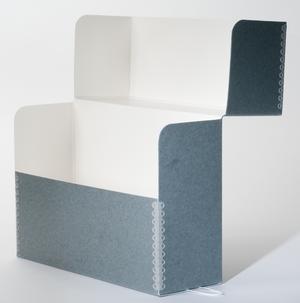- Contact Us
- Emergency Information
- Facility Rental
- Jobs
- Site Map
- Site Policies
- Web Accessibility
- Web Privacy
- © Harry Ransom Center 2025

SIGNATURES
Identified individuals are represented by a biographical sketch, a list of connections to other signatures, and, in most cases, an artifact from the Ransom Centers collections. Help us identify more signatures by submitting your suggested identification.
X
X
THE DOOR
 Location on door: front, panel 2
Location on door: front, panel 2
NICHOLAS VACHEL LINDSAY
Though he is little known today, the poet Vachel Lindsay (1879-1931) was a major figure in the literary landscape of his time. His early training was as an artist, but his teacher, Robert Henri, helped him recognize that poetry was his true calling. Brought up in a deeply religious and political home in Springfield, Illinois, Lindsay was strongly influenced by mystical visions, his deep love of the American landscape, and the rhetorical power of the spoken word. Early in his career he took long walking trips—the first from Florida to Indiana—supporting himself by trading performances of his poems for food and shelter. After self-publishing broadsides and pamphlets for many years, he published his first book of poetry with a commercial press in 1913 and published frequently until his death in 1931. In 1915, he published the first ever study of film as an art form, The Art of the Moving Picture, which was received well by film-makers and critics alike. By 1920, he was widely known and respected among literary audiences, and was able to insist that his published verse be accompanied by his drawings. Intense emotional attachment had long been a difficulty for Lindsay, who had fallen deeply in love with Sara Teasdale and several other women over the course of his life. He married in 1925, but struggled with suicidal thoughts. In 1931, depressed over his work and the financial worries brought on by the financial crash of 1929, he committed suicide.

A photograph of Vachel Lindsay and Stephen Graham, undated
In 1921, Lindsay and the English writer Stephen Graham hiked the Rocky Mountains together, resulting in Graham's spiritual memoir, Tramping With a Poet in the Rockies (1922), illustrated by Vernon Hill. Lindsay created a "sequel and response" in the form of his own illustrated work about the voyage and other topics, Going-To-The-Sun (1923). The inscription on to this photograph reads, "Stephen Graham exhorting Vachel Lindsay to quit drinking coffee before it is everlastingly too late." Graham's book includes a long description of Lindsay's special method for brewing "stone coffee" in the morning, high in the mountains. Graham describes the brew as follows: "It is black, it is good, it has a kick like a mule; it searches the vitals and chases out the damps; it comforts the spine and gives tone to the heart."

